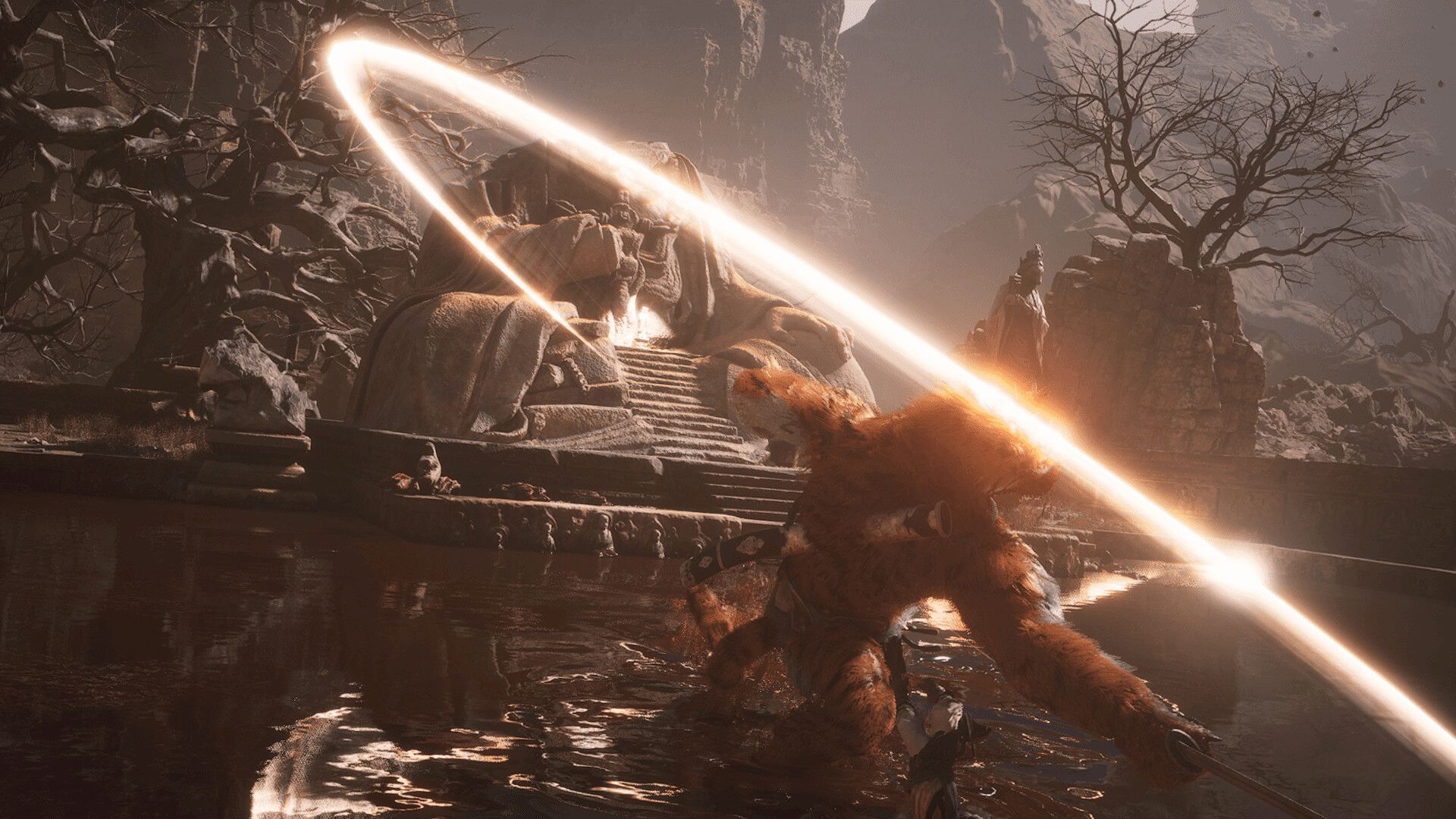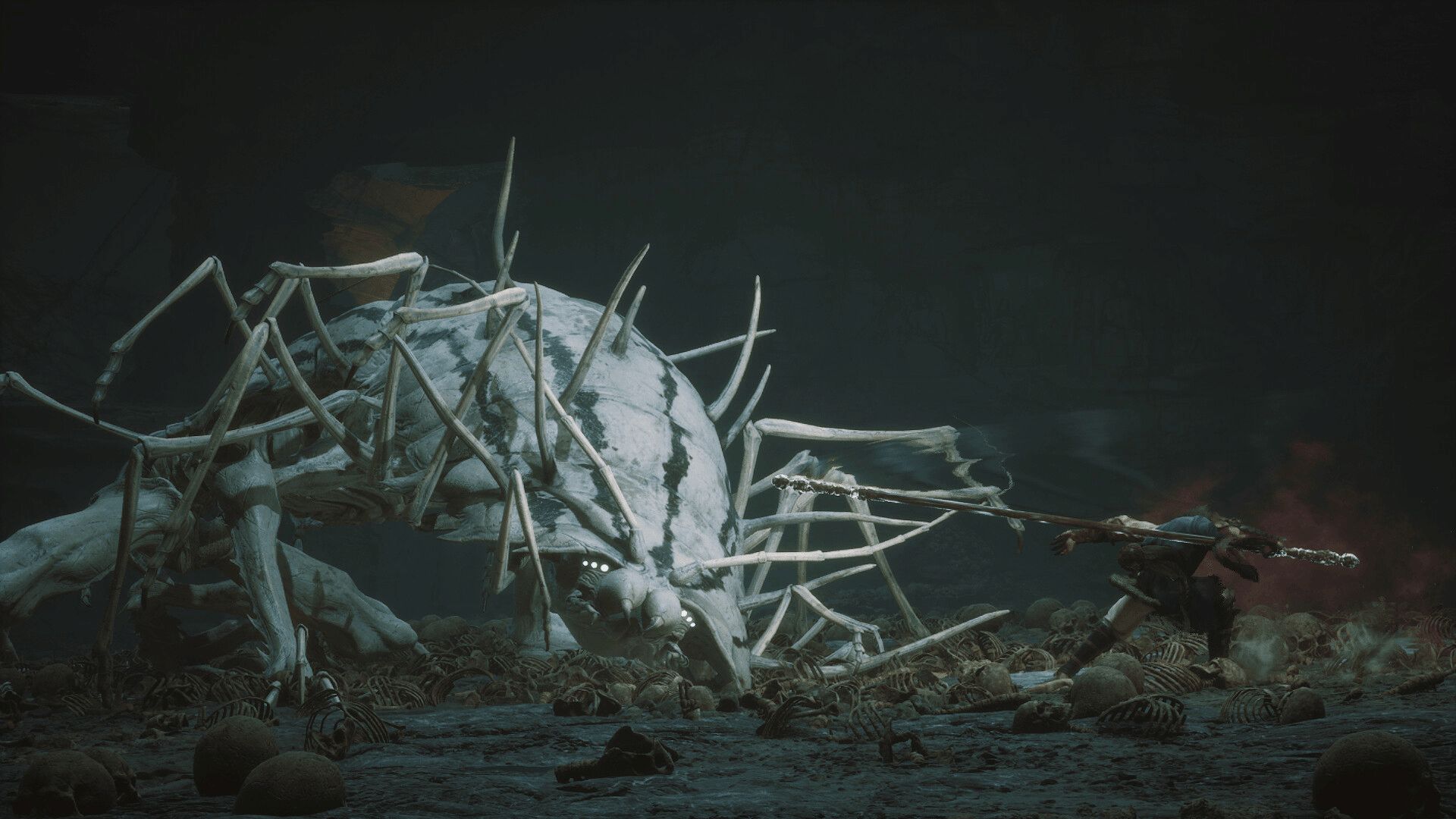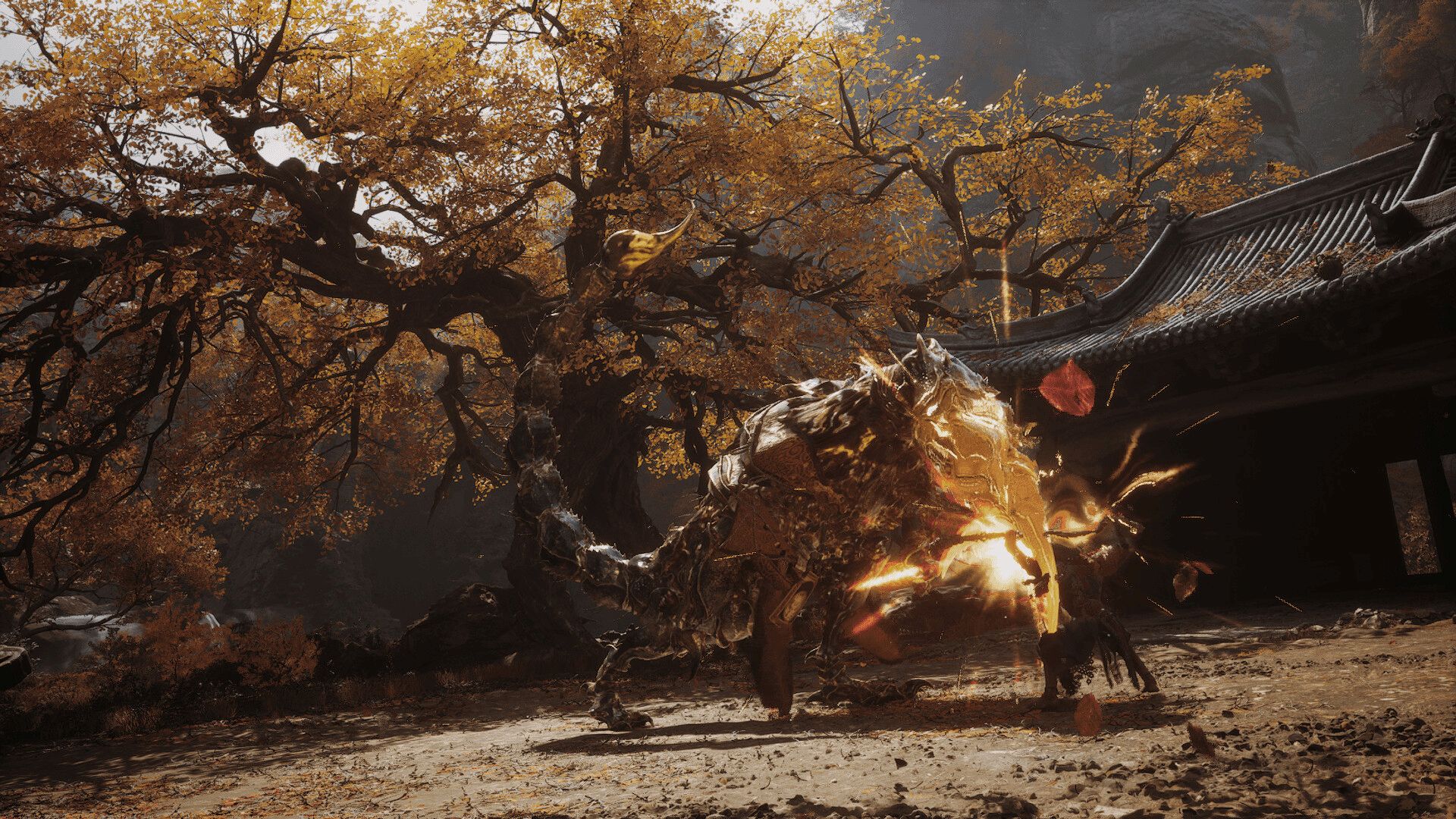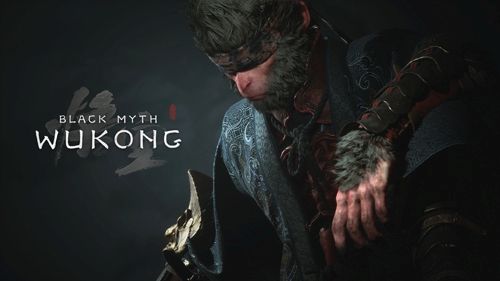Black Myth: Wukong Review
If you’ve been following Black Myth: Wukong‘s development, you know there’s been lots of discussion and speculation about what kind of game it is. It’s an action RPG for sure. But is it a Soulslike, an open-world RPG, a boss rush Monster Hunter-clone, or a distant cousin to God of War? Yes, no and it doesn’t matter. In the end, developer Game Science’s Black Myth: Wukong blends all these elements while retaining an incredibly strong identity. It certainly looks like nothing else. Few games come close to Black Myth: Wukong’s intricately detailed, photorealistic environments.
Another Journey Westward
Black Myth: Wukong draws inspiration from the classic Chinese 16th-century novel The Journey to the West, which also birthed Ninja Theory’s excellent Enslaved: Odyssey to the West game in 2010. The original novel centers on the Monkey God Sun Wukong. It’s a sprawling tale of Wukong trying to redeem himself and return to the heavenly realm by seeking four sacred texts.
Black Myth: Wukong preserves many of the narrative beats and themes of the original but tells an essentially new story. You play as the Destined One. Aside from being a human monkey character fighting through an Earth-like realm, the slightly opaque story unfolds through gameplay, NPCs, and the enemies you encounter and fight. Like the environments, Buddhist and ancient Chinese folklore and myth infuse every encounter. The game inventively uses cut scenes, anime-like sequences, and even songs to spin and deepen the narrative.

Black Myth: Wukong quite often feels like an authentic, epic myth come to life. However, while there are several engaging NPCs that make brief supporting appearances, on the whole, the narrative serves the typical action RPG function of shuttling the player from one fight to the next. The central character is silent and a bit of an emotional cipher. Many of the enemies are passionate and volatile, but overall the emotional tone is subdued.
Ready…Set…Action
Of course, Black Myth Wukong is focused on action and it’s where things get really interesting. The game brings together some familiar systems and introduces some clever new ones.
Game Science has explicitly said Black Myth: Wukong is not a Soulslike but FromSoftware’s influence is unmistakable, if only because almost all action RPGs now live in FromSoft’s shadow. In Black Myth: Wukong this translates to healing shrines that reset enemies and provide fast travel points. Gourds that provide healing, light, and heavy attacks, and craftable consumables all function as they do in most Soulslikes. These few familiar mechanics require little explanation, but Black Myth: Wukong introduces new systems that require some time to fully understand.

All enemies in the game drop Will — or souls or whatever you want to call it — which can be used for upgrades or crafting consumables. Will isn’t lost upon death. Additionally, successful combat earns XP towards leveling. At each new level, players receive a Spark. Sparks upgrade or unlock nearly everything, from new abilities to stronger versions of old ones. While some XP goes away at death, unused Sparks remain.
Defeating either optional or main-story bosses usually yields a new form of magic or a transformation. Magic spells — like immobilizing enemies or adding fire to the Destined One’s staff — are on a cool-down timer and consume mana. Transformations allow the player to briefly take the form of a defeated boss. Given that Black Myth: Wukong has dozens of bosses, the number of spells and transformations becomes very extensive. It’s a minor gripe that it takes a great deal of time and resources to beef up the transformations to a useful level. At least in one playthrough, it simply isn’t possible to effectively use more than a handful.
Doing the Dance
Overall, combat in Black Myth: Wukong straddles the line between the precise dance of Sekiro and the wait-for-an-opening style of Dark Souls. Notably, there is no blocking or parrying, though some magic spells approximate it for a time. Instead, the main defense is dodging and Perfect Dodges, which leave the player’s ghostly image and potentially open the enemy to attack. Naturally, all the elements of dodging like increasing speed or reducing the need for precision come from the skill tree.
Finally, there is a stance system, which allows players to select on the fly from three upgradable stances. One stance focuses on strength, one on using the staff for powerful AOE attacks and the final stance transforms the staff into a distance-closing spear. I found myself switching between all three during combat. The stance system is another way Black Myth: Wukong compensates for its lack of weapon diversity.
Diehard Souls players may find themselves struggling to untrain thousands of hours of muscle memory. Players used to an over-aggressive approach will also hit a wall, as most enemies will quickly punish those tactics. Still, like in most action RPGs, bosses have eventually predictable patterns and timing that can be learned.

When It Clicks
We could talk at great length about how all these systems come together. When they do, combat is as exhilarating as in Sekiro and as satisfying as in Elden Ring.
But getting to that point takes several hours, and Black Myth: Wukong’s leveling pace doesn’t always align with the increasing challenge of combat. In Dark Souls, it’s possible to grind for souls and use over-leveling as a tactic. But in Black Myth, there are relatively few sections of the game with low-level enemies to repeatedly kill for XP (and it’s decidedly not very interesting to do so). While this means that players will nearly always face enemies at a challenging level, it also takes away an option for struggling players. Especially in the first few hours, when most games go out of their way to make players comfortable, Black Myth: Wukong’s difficulty can be frustrating. I can see casual Elden Ring players bouncing off the game’s first two-phase boss pretty hard.
Enemies Everywhere
Black Myth: Wukong has been called a boss rush game, and that’s not entirely inaccurate. There are dozens of both optional/skippable bosses and story bosses that gate further progress. Chinese mythology is full of fearsome dragons, brutal warriors and supernatural enemies, deities, and monsters. Most of these types make an appearance in the game. While there are a few reused bosses, what stands out is the visual variety. Very generally, bosses fall into a few categories: the oversized animals and monsters that hit hard and the super agile enemies that use speed or even teleportation. Many use one of four elemental status effects. In other words, you’ve probably seen similar enemies in other action games, but never in such quantity or visual quality.
In between the bosses are short corridors or slightly more open areas with some hidden nooks, crannies, or side paths. These are — like everything else in Black Myth: Wukong — stunning to look at. But invisible walls are everywhere and the game is essentially very linear. That’s ok. It’s a feature, not a bug. What is slightly disappointing is that the boss arenas are rarely interactive or tactically useful to the player. Level design — though certainly not environmental art or graphics — is relatively lackluster in comparison to the best ARPGs.
Dark Souls and its brethren are known for their varieties of weapons, armor, and builds geared to specific playstyles. Black Myth: Wukong addresses this tradition, too. There is a range of armor sets with specific perks and while there’s just one main weapon, Monkey can craft ever-stronger staves. It’s easy to reset Sparks, too, and changing up one’s build is expected, depending on the particular boss. Finally, both some magic spells and transformations include alternate weapons, at least for a short time.
Synonyms for Stunning
Black Myth: Wukong’s Unreal 5 Engine graphics and overall art design have been widely admired over the past few years. Is it the best-looking game ever made? At least in the realm of photorealistic environments, it probably is. Every element in the scene looks and behaves like the real thing. It really is stunning. Of course, there are all those invisible walls, there’s no day/night cycle, relatively few interactive elements, and not much sense of it being a living world. In other words, it can come across as a sequence of incredibly beautiful animated postcards.
The impressive visuals extend to the game’s fluid animations and combat effects, which are standard-setting for the genre. The audio design and music match the graphics in quality, and I enjoyed the varied musical styles that blended traditional Chinese music with symphonic cues. Most impressive of all is how smoothly everything ran. Aside from some rare pop-ins, I had no issues with bugs, crashes, or dropped frames. Black Myth: Wukong demands fairly high-end PC specs, but it also seems very well-optimized and technically polished. As we all know, this is sadly not often true.

Niche or Not?
I’m a deeply time-invested Souls player. To be honest, it took me a few hours to give up my Soulslike expectations, engrained muscle memory and to set aside comparisons with FromSoftware’s best. When I did, Black Myth: Wukong and its design suddenly made a lot more sense. The biggest disservice to the game would be to come to Black Myth: Wukong as an Elden Ring player, for example, and be disappointed that there aren’t quests, companions, a warehouse full of weapons, and the ability to explore the beautiful world.
As a massively ambitious game made by a relatively small developer, Black Myth: Wukong could have gone sideways in a dozen different ways. That it didn’t is a minor miracle. That the game looks incredible, offers deep and engaging combat and a unique blend of mechanics is even more impressive. Black Myth: Wukong takes a very specific approach to the action-RPG genre that might not be for every player. But judged on its own merits and self-imposed rules, it’s an almost entirely successful and deeply satisfying game to master.
***PC code provided by the publisher for review***
The Good
- Incredible, next-level graphics
- Excellent combat
- Huge variety of bosses
- Well told story
- Runs great on high end PCs
The Bad
- Unimaginative boss level arenas
- Slow leveling
- Difficulty spikes early on

